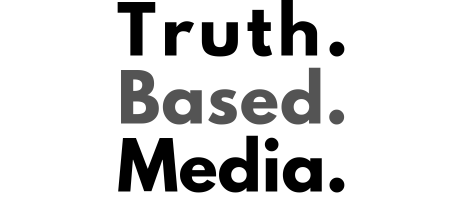- Gold SKYROCKETED during Trump’s first term and is poised to do it again. Find out how Genesis Precious Metals can help you secure your retirement with a proper self-directed IRA backed by physical precious metals.
- The outgoing Biden administration is making a final push to implement diversity, equity and inclusion (DEI) programs across the federal government and public education system before President-elect Donald Trump takes office.
- Over $1 billion in grants have been allocated to DEI initiatives, with a focus on conservative-leaning states that voted for Trump such as Iowa, Missouri and South Carolina.
- The timing of these grants has raised concerns that the Biden administration is using taxpayer dollars to embed progressive policies in areas that opposed their agenda.
- The outgoing administration is also hiring up to 1,200 DEI staffers across federal agencies, which could cost taxpayers a staggering $160 million annually.
- These moves are seen as a challenge to Trump’s promised reforms and an effort to create a permanent ideological resistance within the federal government to oppose changes to DEI programs and reduce government spending.
(Natural News)—As President-elect Donald Trump prepares to take office, the outgoing Biden administration is making a frantic, last-ditch effort to entrench woke diversity, equity and inclusion (DEI) programs across the federal government and public education system.
This move, which includes funneling over $1 billion into DEI initiatives and hiring hundreds of DEI staffers, appears designed to undermine Trump’s promised reforms and punish red states that overwhelmingly supported the incoming president.
Since 2021, the Biden-Harris administration has aggressively funded DEI programs, with the Department of Education alone spending more than $1 billion on initiatives that critics argue prioritize ideological indoctrination over academic excellence. A recent report by Parents Defending Education reveals that these grants have disproportionately targeted schools in conservative-leaning states, including Iowa, Missouri, and South Carolina – states that voted for Trump in the 2024 election.
For example, the University of Iowa received $1.2 million to train elementary-school teachers in “equity-centered education.” Meanwhile, the University of Missouri–St. Louis was awarded $306,209 to train school counselors in “trauma-informed, antiracist social-emotional learning.” The Laurens County School District 55 in South Carolina secured a staggering $13.6 million over three years to integrate DEI into its school culture, including policies on gender identity.
These programs have drawn sharp criticism for embedding race and gender ideologies into curricula and reducing academic rigor. By embedding DEI programs in conservative regions, the administration is ensuring that even Trump’s strongest supporters cannot escape the reach of its progressive agenda.
The timing of these grants, less than three weeks before Trump’s inauguration, has raised eyebrows. Critics argue that the Biden administration is rushing to cement its ideological agenda in red states, effectively using taxpayer dollars to punish voters who rejected Biden’s policies.
Biden also embedding DEI hires in federal agencies
But the outgoing Biden administration’s DEI push extends far beyond education. A recent analysis of federal job postings reveals a hiring spree for DEI roles, with salaries reaching up to $310,000 annually. The administration is racing to onboard as many as 1,200 DEI staffers before Trump takes office, a move that could cost taxpayers $160 million per year. (Related: Biden admin races to fill 1,200 DEI positions – with $160M price tag – before Trump inauguration.)
These positions, advertised across agencies like the Department of Health and Human Services (HHS), the Federal Deposit Insurance Corporation (FDIC), and the Federal Aviation Administration (FAA), are designed to embed DEI frameworks deep within the federal bureaucracy.
For instance, the FDIC is seeking a Director of the Office of Minority and Women Inclusion with a $310,000 salary, while the HHS recently closed applications for a Deputy Assistant Secretary for Minority Health role offering a salary of up to $221,900. These hires are widely seen as an attempt to create a permanent ideological resistance within the federal government, ensuring that Trump’s efforts to dismantle DEI programs and reduce government spending face stiff opposition from within.
The Biden administration’s DEI blitz is not just a parting shot at Trump; it’s a calculated effort to entrench progressive policies in institutions across the country. By targeting red states with DEI grants and stacking federal agencies with ideologically aligned staff, the administration is effectively weaponizing taxpayer dollars to advance its agenda and undermine the incoming president.
One thing is clear as Trump prepares to take office: Biden’s DEI push is a direct challenge to Trump’s vision for America, and it’s a challenge that will shape the political battles of the coming years.
Listen to “Where The Money Go Joe,” a new song by the Health Ranger Mike Adams about the outgoing Democratic chief executive.
This video is from the Health Ranger Report channel on Brighteon.com.
More related stories:
- Biden’s Education Department has allocated more than $1 billion in grants to public schools to promote DEI PROGRAMS.
- Department of Education was WEAPONIZED under Biden to attack, fine and bankrupt religious schools across America.
- Report finds cash-strapped NASA still spending MILLIONS on grants to DEI and “environmental justice” initiatives.
- Vote-buying scheme FAILED: Biden drops student debt forgiveness plans.
- Tennessee Rep. Burchett: Kamala Harris is a DEI VICE PRESIDENT.
Sources include:



